
Empower Tanzania Inc.
Error: The map ID (19) does not existEmpower Tanzania Inc.
Empower Tanzania (ET) is located south east of Arusha in the north central region of Tanzania. It supports its rural communities in their quest for better quality of life. For example, ET is currently focused on farming as a family income source, livestock and horticulture, community-based alternative education programs, irrigation, infrastructure, and access to clean water. Lack of access to health services in rural areas is a difficult challenge to overcome. ET considers it a major deterrent to economic development and resiliency.
This deficiency is compounded by limited and too often, inaccurate information about healthy behaviors. Through the Transform network, ET will be able to address these issues. As well, Transform raised the need for a deeper understanding of regional issues, comprehensive planning, a strategic focus, and capacity development.
Contact ETI or visit our website.
Empower Tanzania
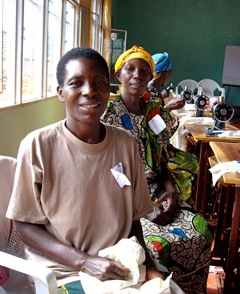
THARS – Burundi
Error: The map ID (17) does not existTHARS – Burundi
(picture above is the Women’s Support Groups’ participants in a sewing crafts workshop)
Contacts:
THARS was organized by the Director, David Niyonzima, in 2000, while Burundi’s 12-year civil war was still raging. The first programs were reconciliation workshops, between Hutu and Tutsi components of the society and the civil war. While many people were being brought together, in peaceful reconciliation, too many seemed completely stuck and incapable of moving forward in
their own lives, let alone in peace with their neighbors. This was especially true for many of the village and rural women.
The THARS staff learned about the debilitating psychological wounds of trauma from violence. Their counsellors received training in identifying signs of trauma and in healing trauma, in one-to-one sessions but much more extensively in groups in “Listening Rooms”, where people who distrusted one another could feel safe and not be forced to speak. over the next several years, THARS trained more than 2,000 trauma healers in east central Africa and treated thousand of clients.

Sustainable Agriculture trainer, female student (and husband) with garden planted 1/2 traditionally and 1/2 the new way
In 2006, a local governor gave a land grant to THARS, to build a training and retreat center. This location is in the mountainous center of the country, near the city of Gitega. A request from David for help in beginning construction, resulted in an April, 2007 cross-cultural work camp of 9 participants from the USA and about 15 from Burundi. The U.S. director of the work camp, John Braun, was later asked, in 2009, to form an international agency to support the work of THARS. This U.S. non-profit is THARS International. Additional cross-cultural work camps were held in 2012 and in 2014.
Currently, THARS staff are located in 11 centers throughout Burundi. Staff include counselors, community organizers, trainers and administrative support persons.The land-locked country of Burundi, bounded by Lake Tanganyika on the west, Tanzania to the east and south, and Rwanda to the north, is itself about the size of Massachusetts or about half the size of Nova Scotia.
As a trustworthy, widely acclaimed organization, THARS has and continues to receive international grants to carry out additional missions:
- organization of Women’s Support Groups, for trauma survivors, to assist one another in training and producing income
- sewing, quilting and crafts workshops for the Women’s Support Groups, taught by a Peace Through Pieces mission from Seattle
- organization of at-risk kids (orphans, abused, street children and former child soldiers) into girls dance troupes and boys drumming circles
- organization of more than 125 village Women’s Self-Help Groups, 20 women per group with a common bank account, to cooperate in producing income
- provide counselors to accompany victims of torture and prepare people for a Truth and Reconciliation process in the nation
- train university students and community leaders in intensive Alternatives to Violence (AVP) workshops
- conduct Healing of Memories workshops to heal deep-seated trauma
- help a women’s support group near the capitol to obtain a cassava four grinder and set up shop in a market area
- partner with Washington State University Extension Services to introduce 4-H programs to several schools
- Establish an exponentially growing Sustaining Agriculture Training program, decentralized to participants’ own gardens and villages
- Introduced “Clean Water Burundi”, with clean water training and Bio-Sand water filter manufacturing for Women’s Self-Help groups and for Batwa (pygmy) villagers
THARS – Burundi

Making a Fero-cement tank
A water reservoir can store rainwater for domestic use or for irrigating a vegetable garden. This manual describes how to make inexpensive cement storage tanks like straw or bamboo mat tank and
brick tanks. A small amount of cement is needed. The walls are reinforced with steel wire. The tank can be placed under a roof to collect rainwater or just beside a well with a pump to store irrigation water.
It is advisable to add a simple ground water recharge overflow pipe to store over capacity of water in the ground, ready to pump it up later.
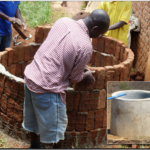 Get the manual at: http://jacana.help/resources/water#maketank
Get the manual at: http://jacana.help/resources/water#maketank
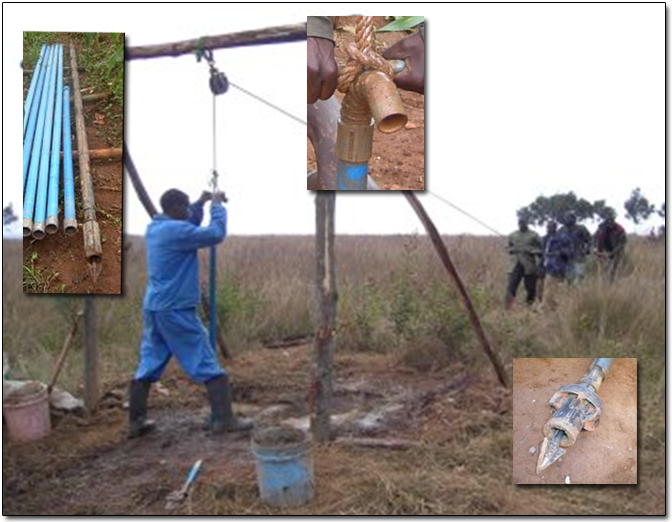
Baptist Drilling
Baptist drilling is one of the manual drilling techniques. It is named after the Baptist Missionary, Mr Terry Waller who invented the technique.
This method is limited to non cemented, sedimentary deposits of sand and clay and will not drill through solid bed rock. Some soft rock can be drilled slowly. For gravel or stones from 1 to 3 cm an open bit can be used combined with sludging. A mayor difference compared to other techniques as the Rota Sludge is that this technique uses 1 ¼” PVC pipes on top of the lower steel drill pipe. Therefore this option is very light and can drill down to 100 meters deep.
See also www.waterforallinternational.org. This technique uses a sharp drill bit to loosen the soil and drilling liquid to lift the particles.
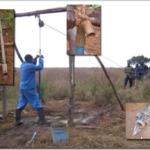 Get the manual at: http://jacana.help/resources/water#baptistdrilling
Get the manual at: http://jacana.help/resources/water#baptistdrilling

Well Digging
People make hand dug wells since history. They dig until they find water. A hand dug well has normally a diameter of 0.8 up to 1.5 metre and varies in depth, depending on how deep water is found. When using a ventilator for fresh air during digging, it becomes even possible to dig up to 30 meter or more. A hand dug well can be made in hard soils as well as in soft soils. The soil structure and water level determines how to support the walls.
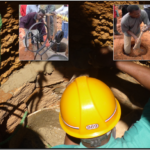 Get the manual at: http://jacana.help/resources/water#welldigging
Get the manual at: http://jacana.help/resources/water#welldigging


